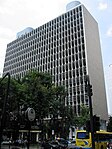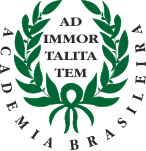Castelo, Rio de Janeiro

Castelo is a region in Rio de Janeiro, Brazil, but not officially recognized as a neighborhood, and officially forming part of the Centro neighborhood. It is generally considered to be located in the region between Avenida Rio Branco, the Santos Dumont Airport and Praça Quinze de Novembro. The area derives its name from the former Morro do Castelo in that location, which was demolished by water jets in the 1920s. As most of the buildings in the area were designed and built in the first half of the twentieth century, after the demolition of Morro do Castelo (Castle Hill) in 1921, the region became home to a large collection of Art Deco buildings. Art Deco was the prevalent architecture style in Rio de Janeiro at that time.
Excerpt from the Wikipedia article Castelo, Rio de Janeiro (License: CC BY-SA 3.0, Authors, Images).Castelo, Rio de Janeiro
Avenida Presidente Antônio Carlos, Rio de Janeiro Centro (Zona Central do Rio de Janeiro)
Geographical coordinates (GPS) Address Nearby Places Show on map
Geographical coordinates (GPS)
| Latitude | Longitude |
|---|---|
| N -22.908888888889 ° | E -43.1725 ° |
Address
Delegacia Regional do Ministério do Trabalho
Avenida Presidente Antônio Carlos
20020-010 Rio de Janeiro, Centro (Zona Central do Rio de Janeiro)
Rio de Janeiro, Brazil
Open on Google Maps






